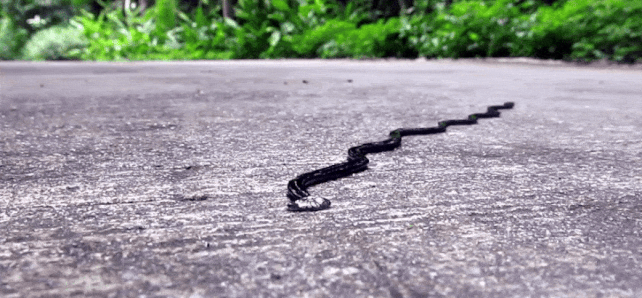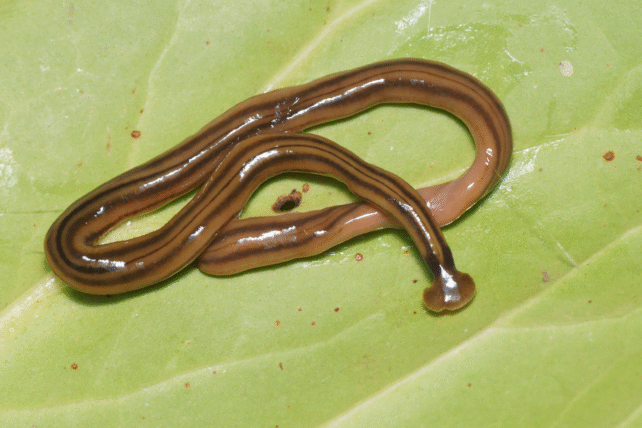"Don't kill it, don't squish it, don't cut it up," Texas Agriculture Commissioner Sid Miller warned residents via NBC as a toxic flatworm spreads across North Texas.
While this invasive species has been in the US for years, the state's fatally heavy rains, fueled by climate change, are enabling the hammerhead flatworm (Bipalium kewense) to thrive and spread.
This brown and black-striped, flattened land planarian with a distinctive half-moon-shaped head can reach lengths of up to 40 cm (15.7 inches). Like many flatworm species, it can regenerate a whole new worm from slices of itself.
Decapitating the worm will only help it multiply.
Related: Rare Two-Headed Flatworms Produce Topsy-Turvy Offspring, Scientists Discover
"Tear it in half, now you've got two worms," Miller told NBC's Keenan Willard.
Instead, authorities advise not to touch the flatworms with bare hands, but where it's safe, to place the worms in a bag and freeze them for 48 hours. They're also asking people to report sightings of the flatworms to the Texas Invasive Species Institute.
 A species of hammerhead flatworm on the move. (Placebo365/Creatas Videa/Getty Images)
A species of hammerhead flatworm on the move. (Placebo365/Creatas Videa/Getty Images)Native to Southeast Asia, these terrestrial predators thrive in hot, humid environments, where they eat snails and earthworms.
Their diet makes greenhouses ideal homes, allowing the flatworm to often spread through gardening activities and the horticultural industry.
Hammerhead flatworms can be found in leaf litter, moist mulch, and soil.
"Some, but not all species of Bipalium, produce a neurotoxin called tetrodotoxin in their mucus," Virginia Tech entomologist Theresa Dellinger said in 2023, explaining they don't bite or sting.
"The purpose of it is to subdue their prey."
The sodium-channel blocker, which is also found in pufferfish, can, however, irritate the skin and mucus membranes of humans and pets.
 Hammerhead flatworm, Bipalium kewense. (Pierre Gros/Justine et al., Biodiversity and Conservation, 2018)
Hammerhead flatworm, Bipalium kewense. (Pierre Gros/Justine et al., Biodiversity and Conservation, 2018)As they're an invasive species, hammerhead flatworms have no natural predators in the US. When conditions are favorable, flatworm numbers can grow out of control, leading them to deplete the earthworms that play a major role in keeping soils healthy.
"Other animals rarely devour land planarians, since surface secretions appear distasteful, if not toxic," University of Florida nematologists explained in 2004. "Because of their cannibalistic habit, land planarians may be their own worst enemy."
The recent spread is one of many examples of climate change driving the proliferation of invasive species.
.png)





